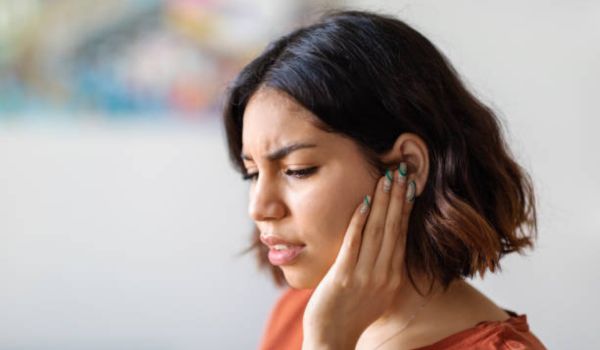
Bug in Ear: Symptoms, Causes, and Solutions
Having a bug in your ear is not only distressing but can also pose risks to your ear’s health. The feeling of movement, buzzing sounds, or pain can make the situation alarming. If not addressed promptly, it may lead to complications like infections or even damage to the eardrum. Understanding how to remove bug in ear and knowing the steps to take can help you address this issue effectively and avoid further problems.
This blog explores the common signs and symptoms of a bug in the ear, immediate actions to take, professional removal methods, and prevention tips. If you suspect a bug in your ear, it’s essential to seek prompt care. For expert assistance, visit our hearing care clinic or consult an audiologist for safe removal and follow-up care.
How to Remove Bug in Your Ear
A bug in your ear can be identified through specific symptoms and sensations. Recognizing these early signs is essential to prevent discomfort and complications.
Common Signs to Watch For:
- Persistent Buzzing or Fluttering Sounds: A live insect in the ear often creates continuous noises due to its movements or wings.
- Sudden Ear Pain or Discomfort: The bug’s activity inside the ear can irritate sensitive areas, leading to sharp or throbbing pain.
- Sensation of Movement or Tickling: A crawling or fluttering sensation within the ear canal is a key indicator of a bug’s presence.
- Hearing Changes: Muffled sounds or temporary hearing loss can occur if the bug obstructs the ear canal.
- Swelling or Redness Around the Ear: The irritation caused by the bug may lead to visible inflammation near the ear opening.
Symptoms of a Bug in the Ear
When a bug enters the ear, it can cause a range of physical and auditory symptoms. Recognizing these signs is critical for deciding the next steps.
Symptom | Description |
Intense Itching | Persistent itching due to the bug’s movement or attempts to escape. |
Ear Pain | Sharp or continuous pain caused by the bug irritating the ear canal. |
Buzzing or Ringing | Noises are created by the insect’s movement or wings. |
Hearing Loss | Temporary blockage of sound caused by the bug’s size or position. |
Discharge | In severe cases, fluid discharge may indicate irritation or infection. |
What to Do if a Bug is in Your Ear
Knowing what to do in this situation can help minimize discomfort and reduce the risk of complications. Follow these steps for immediate relief:
Immediate Actions to Take:
- Stay Calm: Avoid panicking, as sudden movements may push the bug further into the ear canal.
- Tilt Your Head: Turn your head so that the affected ear is facing downward to encourage the bug to exit naturally.
- Shine a Light: Use a flashlight to attract the insect out of the ear, as bugs are often drawn to light sources.
- Use Gravity: Lie down on your side with the affected ear facing downward to let gravity assist in removal.
What Not to Do:
- Avoid Inserting Objects: Do not use tweezers, cotton swabs, or any sharp objects, as they can push the bug further in or damage the ear.
- Don’t Pour Liquids: Unless guided by a medical professional, avoid pouring liquids into the ear, as this could harm the delicate ear structures.
Professional Removal and Care
If at-home methods fail or symptoms persist, it’s crucial to seek professional care.
- Consult an Audiologist: Audiologists are equipped with tools and expertise to remove foreign objects safely without causing damage.
- Medical Removal Techniques: Professionals may use methods such as suction, flushing, or specialized instruments to extract the insect.
- Post-Removal Treatment: After removal, medications such as antibiotics or anti-inflammatory drops may be prescribed to reduce irritation and prevent infection.
For safe and effective care, schedule an appointment at our hearing care clinic in Delhi.
Ear Pain Caused by Insects: Risks and Complications
- Infections from Bacteria: Bugs can carry bacteria that may lead to infections in the ear canal or middle ear. These infections can cause significant pain, swelling, and even discharge if left untreated.
- Eardrum Damage: Persistent movement or scratching by the insect can harm the delicate eardrum. Damage to the eardrum can result in pain, hearing difficulties, and increased weakness of future infections.
- Temporary or Long-Term Hearing Loss: If the bug remains in the ear for an extended period, it may obstruct sound transmission, causing temporary hearing loss. In severe cases, this can lead to long-term damage to the auditory system.
- Foreign Body Reaction: The ear may respond to the presence of the insect as a foreign object, triggering swelling, redness, and irritation. Severe reactions can also cause fluid discharge, requiring medical attention.
- Increased Risk of Secondary Infections: Insects trapped in the ear can create an environment conducive to bacterial or fungal growth. This can exacerbate the problem, leading to more severe infections if not addressed promptly.
- Emotional Distress and Discomfort: The sensation of having a bug in the ear, coupled with pain and noise, can cause significant distress and anxiety. Addressing the issue promptly can alleviate both physical and emotional discomfort.
Prevention Tips to Avoid Bugs in the Ear
Preventing bugs from entering your ear is more straightforward than dealing with their removal. Follow these practical tips:
- Use Ear Protection: Wear earplugs or muffs when sleeping outdoors or in areas with high insect activity.
- Keep Living Spaces Clean: Regularly clean and maintain your home to minimize insect infestations.
- Avoid Risky Behaviors: Refrain from inserting objects like cotton swabs into your ears, as this can introduce debris or create irritation.
- Be Cautious During Outdoor Activities: Use insect repellent and avoid sleeping directly on the ground to reduce the risk of bugs entering your ear.
- Schedule Regular Ear Check-Ups: Routine visits to a hearing care clinic can help identify potential issues and maintain ear health.
Conclusion
Understanding how to remove if a bug in ear is essential for taking timely action to prevent discomfort and complications. From buzzing sounds to ear pain caused by insects, recognizing the symptoms and following safe removal steps can make all the difference.
For expert care, visit our hearing care clinic in Delhi or consult an audiologist for effective bug removal and follow-up care. With preventive measures and regular ear health check-ups, you can enjoy a healthier, bug-free life.
Frequently Asked Questions
The most common symptoms include persistent buzzing or fluttering sounds, sharp or throbbing ear pain, a tickling sensation, muffled hearing, and occasional swelling or redness around the ear.
You can try safe methods like tilting your head or shining a flashlight to encourage the bug to exit. However, avoid inserting objects into your ear. If the bug doesn’t come out, seek professional assistance from an audiologist.
A bug may survive for several hours, depending on the environment inside the ear. Prompt removal is crucial to prevent complications such as infections or damage to the ear canal.
While rare, the prolonged presence of a bug can lead to complications like infections, damage to the eardrum, or temporary hearing loss. Timely removal and proper care minimize the risk of long-term damage.
To prevent bugs from entering your ear, use earplugs when sleeping outdoors, maintain a clean living space, and avoid lying directly on the ground. Regular ear check-ups can also help ensure your ear health is maintained.
Dr. Harshi, is an accomplished Audiologist with extensive expertise in treating individuals with hearing impairments.

